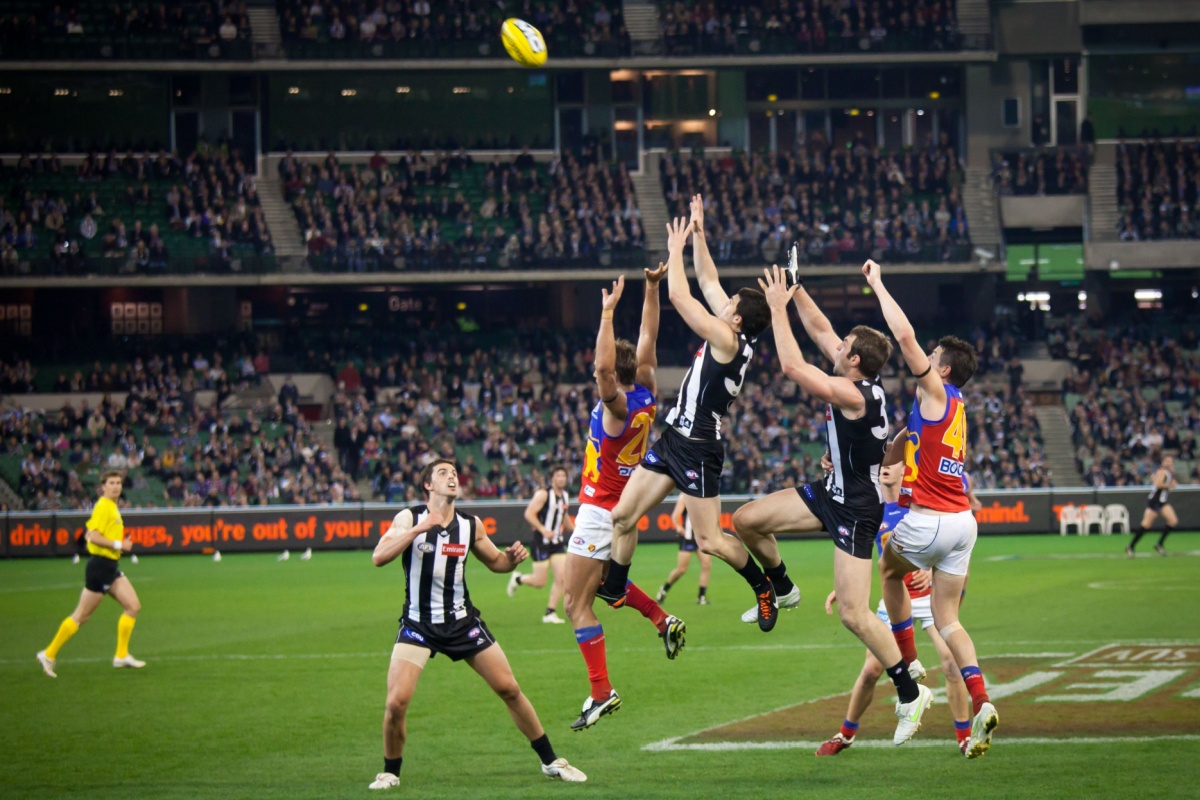Whether you’re new to the oval or simply curious about how Aussie Rules football works, this guide will explain the basic rules of AFL!
While cricket and rugby may dominate the sporting landscape in Australia, Aussie Rules (often simply called “footy”) holds a special place in the hearts of many.
AFL is a sport of passion, endurance, and breathtaking moments. As the sport continues to thrive in Australia and beyond, understanding these basics will help you enjoy and appreciate the game even more. So grab a Sherrin, find some space, and let’s dive into the basics of AFL, from the rules and player positions to key terms and skills.
Team Formation
Aussie Rules football is played between two teams of 18 players on the field at any given time.
Here’s a breakdown of the key positions and their roles:
- Forwards: Positioned closest to the opponent’s goal, these players are responsible for kicking the majority of the team’s goals.
- Midfielders: The engine room of the team, these players cover the most ground, transitioning the ball between defence and attack.
- Defenders: Tasked with stopping the opposing team from scoring, they protect their goal and clear the ball out of the defensive 50.
- Ruckman: A specialist player who contests the ball at stoppages, particularly in centre bounces after goals and boundary throw-ins.
Equipment Needed to Play Aussie Rules
To get started with AFL, you’ll need:
- A football (often referred to as a “Sherrin”)
- A mouthguard
- Boots with studs for grip on the grass
- An oval-shaped field with four goalposts at each end

Australian Football. Photography by MichaelHahn via Shutterstock
Winning the Game
The objective in AFL is simple: score more points than the opposing team. Points are scored by kicking the ball between the goalposts. On a field there are four posts on either side of the oval: the centre two posts are the goalposts, while the outer two are the behind posts. A goal, worth six points, is scored when the ball is kicked between the two central goalposts without being touched. A behind, worth one point, is scored if the ball passes between a goalpost and a behind post, or if the ball hits a goalpost.
Scoring in AFL
Here’s how the scoring works:
- Goals: A clean kick through the middle two posts earns six points.
- Behinds: A kick that goes between a goalpost and a behind post, or that hits a goalpost, scores one point.
- Set Shots: After being awarded a free kick for a mark or a penalty, a player can take an unopposed kick at goal from the spot where the mark or free kick was awarded.
Basic Rules and Gameplay
The game begins with a centre bounce, where the ruckmen from each team leap to tap the ball to their teammates. Here are some of the basic rules to keep in mind:
- Marking: If a player catches the ball from a kick that has travelled more than 15 metres without being touched, they are awarded a “mark” and can take an unopposed kick from that spot.
- Tackling: Players can tackle opponents to gain possession of the ball, but it must be done within the rules – no high tackles or pushes in the back.
- Holding the Ball: If a player is tackled while in possession and fails to dispose of the ball correctly (by kicking or handballing), the umpire will award a free kick to the opposing team.
An AFL game lasts 80 minutes, divided into four quarters of 20 minutes each. If the scores are tied at the end of regular time, extra time may be played to determine a winner, particularly in finals matches.
Personal Fouls and Violations
While AFL is a contact sport, there are rules to ensure the safety of players:
- Free Kicks: Awarded for infringements like holding the ball, pushing in the back, or high tackles.
- 50-Metre Penalties: Given for more serious infringements, such as time-wasting or arguing with the umpire, which can significantly advance the attacking team closer to goal.
- Reports: Players can be reported for serious offences, leading to tribunal hearings and potential suspensions.
So, there you have it. These are the basic rules of AFL that’ll get you ready for the upcoming Grand Final. Delve deeper into the world of sport with our list of the 10 Best Sport Autobiography Books You Must Read. Or, test your knowledge with our quiz to see if you can Name Each of these 10 International Sport Stadiums.


